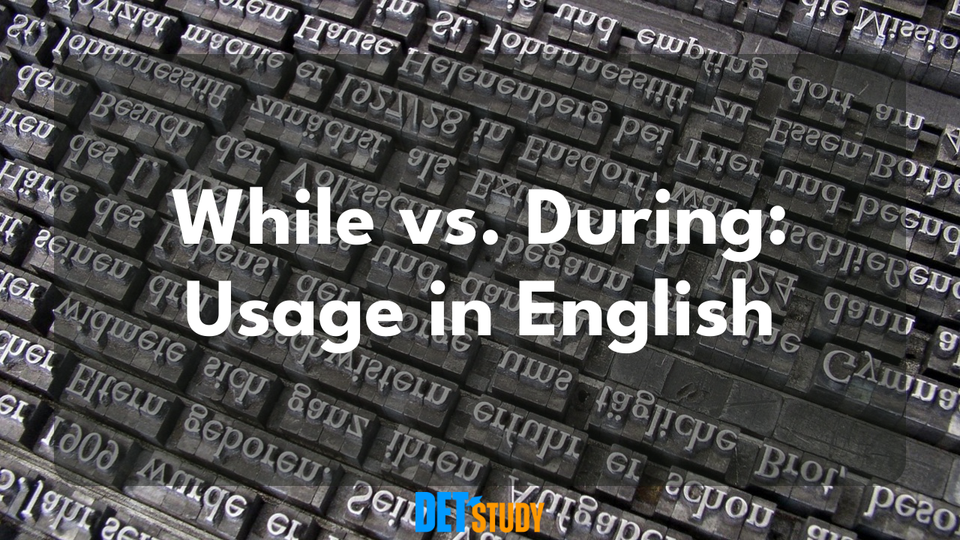Mastering 'While' vs. 'During': A Clear English Grammar Guide

Introduction to "While" and "During"
Understanding "while" and "during" is key for English learners, as both express time but have distinct uses. 🕰️
"While" is a conjunction, linking two actions or events happening at the same time. It introduces a clause with a subject and a verb:
- She read a book while she waited for the bus. (Reading and waiting happen concurrently)
"While" can also compare or contrast two situations:
- While John prefers tea, his sister prefers coffee.
"During", a preposition, specifies a time period for an event. It is followed by a noun or noun phrase, not a full clause:
- He met many interesting people during his travels.
"During" highlights the time frame in which an event occurred.
For example:
-
They played football while it was raining outside.
(Playing and raining happen at the same time) -
During the rain, we decided to stay inside and watch a movie.
(The rain defines the period for staying inside)
Choose "while" for simultaneous actions and "during" for events within a specific time period. This distinction improves precise communication.
How to Boost Your Duolingo English Test Score by 10 PointsGrammatical Usage of "While"
"While" functions as a conjunction, showing two or more actions occurring simultaneously. It introduces a subordinate clause containing a subject and verb.
Examples:
-
She cooked dinner while the children did their homework.
"While" connects concurrent actions: cooking and doing homework.
"While" also highlights contrast between situations:
-
While he loves classical music, his brother prefers rock.
This shows contrasting music preferences.
It can also show interruptions to ongoing actions:
- We were watching a movie when, while all of a sudden, the lights went out.
Here, "while" indicates an interruption during an ongoing activity.
"While" helps create complex sentences by expressing comparisons, contrasts, or simultaneous events, enriching your English expression.
Grammatical Usage of "During"
"During" is a preposition, used to specify a time frame for an event. Unlike "while," it is followed by a noun or noun phrase, not a full clause.
Examples:
-
During the meeting, important decisions were made.
"During" defines the meeting's duration as the time decisions were made. -
The museum is closed during the winter months.
This suggests the entire winter season as the closing period. 📅
"During" effectively pinpoints the time span for an action or event, providing clarity and detail about when something occurs without needing a subordinate clause.
Common Mistakes and How to Avoid Them
Distinguishing "while" and "during" is crucial. Here are common errors and fixes:
Mistake 1: Mixing Up Their Functions
- Incorrect: She was talking during I was reading.
- Correct: She was talking while I was reading.
Why? "During" takes a noun/noun phrase; "while" links clauses with a subject and verb.
Duolingo Test PracticeMistake 2: Misusing "During" as a Conjunction
- Incorrect: I listened to music during I was doing my homework.
- Correct: I listened to music while I was doing my homework.
Why? "During" cannot connect two actions directly; use "while" for simultaneous events.
Mistake 3: Overusing "While" for Time Periods
- Incorrect: While the night, it was cold.
- Correct: During the night, it was cold.
Why? "While" doesn't specify a time period; "during" does.

Mistake 4: Using "While" for General Time Frames
- Incorrect: We visited many places while our vacation.
- Correct: We visited many places during our vacation.
Why? "While" is for simultaneous actions, not framing general periods.
Mistake 5: Forgetting Contextual Use
- Incorrect: The phone rang while the night.
- Correct: The phone rang during the night.
Why? Use "during" to indicate an event within a larger context or period.
Using Your Smartphone as a Second Camera for the Duolingo English TestTips to Avoid Mistakes
-
Identify the Structure: "While" uses two clauses (subject + verb); "during" uses a noun/noun phrase.
-
Remember the Purpose: "While" for simultaneous actions or contrasts; "during" for time periods or contexts.
Tips for Using "While" and "During" Correctly
Mastering "while" and "during" involves understanding their specific contexts. 💡
-
"While" for Simultaneous Actions: - Explanation: Connects two clauses (each with subject and verb) to show actions happening at the same time. - Example: "She was cooking while I was setting the table."
-
"During" for Specific Time Periods: - Explanation: Refers to a particular period or event. Always followed by a noun or noun phrase. - Example: "He took notes during the lecture."
-
Identifying Sentence Structure: - While: Look for a subject and verb immediately following "while." - During: Check for a noun or noun phrase after "during." - Compare: "He sang while he drove." (Two actions) vs. "He sang during the drive." (Time of drive)
-
Avoiding Common Confusions: - "While" with Nouns: Incorrect to say "While the meeting." Use "During the meeting." - "During" with Actions: Don't use "during" to link actions. Say "I read while eating" instead of "I read during eating."
Consistent practice will enhance your grammatical accuracy.
DET Study offers over 15,000 practice questions, focusing on adjectives and adverbs to boost your grammar. Regular practice with these materials builds confidence and precision for the Duolingo English Test, helping you achieve desired scores.
🎯 Need more practice? Check out DETStudy.com for expert resources, 15,000+ practice questions, and AI-powered writing and speaking feedback.

